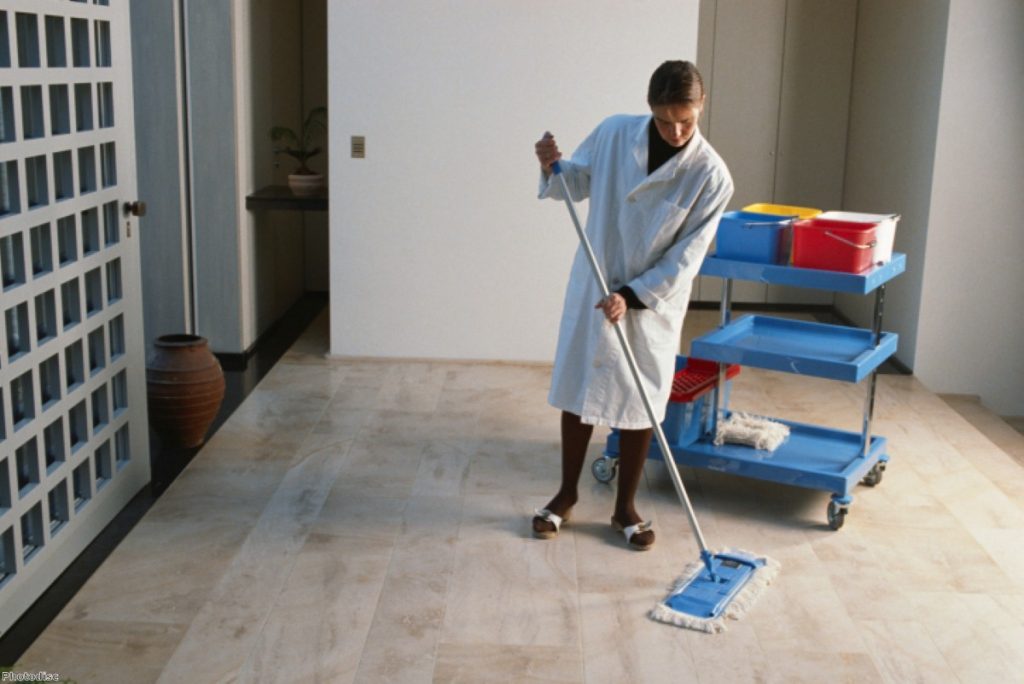The gender pay gap debate needs some old-fashioned class analysis
For too long the discussion around unequal pay has neglected the women who work at the bottom end of the labour market. There's a good reason for that. Research shows that the gap in annual salaries is far bigger for top earners. But inequality in low paid work ultimately has far more significant consequences for women.
The pay gap at the bottom is often not as obvious as it is at the top. It’s harder to compare the pay gap between men and women in like-for-like roles, so instead you have to look at jobs of similar value.
In 2013, over 100 carers, cleaners and cooks brought legal action against Birmingham City Council after being denied bonuses handed out to staff in traditionally male-dominated roles like street-cleaning, refuse collection and grave-digging. The women eventually succeeded and the council agreed to settle 11,000 subsequent claims.
A similar case in Scotland saw South Lanarkshire council agree to a settlement with female staff after complaints that male manual workers were paid more than female staff of the same skill set.


Those cases had a tangible effect in the public sector. This week, the Scottish government announced it was planning to bring in regulations which would require public sector agencies with more than 20 staff to provide statements on equal pay.
Nicola Sturgeon, Scotland's first female First Minister, to legislate for closure of gender pay gap https://t.co/km10JoYYaG #genderpay
— Catalyst, Inc. (@CatalystInc) January 18, 2016
But what about all the cleaners, carers and catering staff who work in the private sector?
We might soon get reliable data on that. Parliament's women and equalities committee recently decided to include low paid work as part of the gender pay gap inquiry. In a session last week, the committee heard evidence from the TUC's women's equality officer, Scarlet Harris, who spoke about the connection between low-paid work and unequal pay. "Low pay tends to follow where women work," she told MPs. "Where men come into traditionally feminised sectors, the pay tends to go up; where women move into sectors where they have not been before the pay tends to go down."
It's working class women who do the type of work Harris refers to. And this is where the impact of the pay gap hits hardest. Unequal pay is never acceptable, but when you're highly paid, the impact is less significant than for somebody on the minimum wage.
Whenever I hear discussions about achieving equality in the home and the workplace, it usually involves somebody claiming that flexible hours and the opportunity for parents to work from home is the way forward. This is all well and good for many middle class families but it simply isn't an option for most of those on low pay. A carer or cleaner can't set up a little desk in their bedroom and work from a laptop. Instead, they're heading out to work before most people are awake in the morning, and then rushing home to do the school run before often starting a second job during the day.
The modern class divide is often about the laptop. If you work on one, there's a chance you can do so remotely and therefore flexibly. If you don't – if your work is about your manual labour – that luxury isn't available to you.
There is no conversation in working class households about who will do the bulk of the childcare. If the man earns more, the only option is for the woman to work around his hours and inevitability be responsible for most domestic duties as well.

That's for those couples who earn enough to stay together. In many of the poorest homes the way the benefit system works means it's often more financially beneficial for them to live apart. As the ethnographer Lisa McKenzie discusses in her book about life on a Nottingham council estate, Getting By, many working class families are not only vulnerable to the market but also to changes to benefits. "This structural instability has had massive consequences for family life," she wrote. "Both men and women talked about their aspirations to one day live as a 'proper family'."
There have long been complaints that feminism has let working class women down. Most feminist arguments centre around choice, but most of the choices available for women in low paid work are theoretical.
A 2013 report by the Institute for Public Policy Research found that – while gender had a strong impact on women's earning prospects – class, education and occupational backgrounds are stronger determinants of a woman's progression and potential earnings. For many, it was evidence that modern feminism had left working class women behind.
As a woman from a working class background, it's only recently feminism became something I felt I could relate to. It wasn't because feminists weren't speaking to women like me. It was just that until the rise of social media I had never come across much feminist theory. Like many women from my background, I grew up on a council estate and left school at 16. There were plenty of strong female role models around, just not much talk about intersectionality or The Female Eunuch.
When they're not being ignored altogether, working class women are usually being ridiculed for their clothing or accents, or being depicted as scroungers off the state. These are the women who you happily allow to look after your grandparents or clean your house, but who you conveniently forget about, or laugh at, the rest of the time. Working class women are massively undervalued. It's hardly surprising that the work they do is also.
Without some good, old-fashioned class analysis, the debate over the gender pay gap will continue to offer little to these women. The way the debate is currently conducted means it has more to offer the female executive than the woman who serves her lunch.

